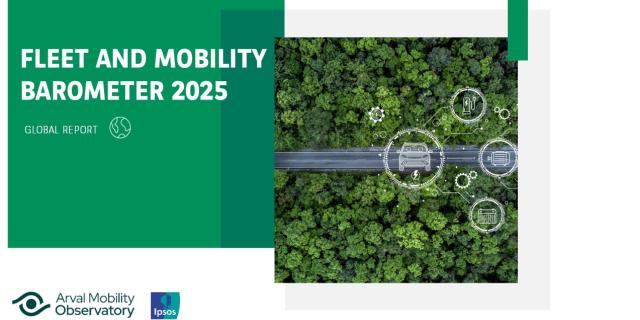How rating more than 40 countries will help fleet managers making effective decisions regarding their international electrification strategies?
The new Countries Energy Transition Maturity Score study co-conducted by the Element-Arval Global Alliance and Arval is potentially one of the most important pieces of international fleet research that has been undertaken for some time.
 It rates more than 40 countries worldwide on electric vehicle (EV) adoption, looking at factors such as government incentives, charging infrastructure and manufacturer presence, arriving at a final score using the six metrics of taxation (weighted at 25%), total cost of ownership (25%), accessible public charging network (20%), estimated future EV market share (15%), urban clean air regulations (10%) and Arval Mobility Observatory’s view (5%).
It rates more than 40 countries worldwide on electric vehicle (EV) adoption, looking at factors such as government incentives, charging infrastructure and manufacturer presence, arriving at a final score using the six metrics of taxation (weighted at 25%), total cost of ownership (25%), accessible public charging network (20%), estimated future EV market share (15%), urban clean air regulations (10%) and Arval Mobility Observatory’s view (5%).
Shams-Dine El Mouden, Arval’s International Consulting Director and Nicolas Michel, International Senior Consultant, answered a few questions about the document and revealed its potential impact on operations for international fleets.
What was the thinking behind this research?
Nicolas: We wanted to provide a useful picture of the situation worldwide for our fleet customers as they looked to create international electrification strategies. It’s a subject that more and more of them want to tackle and there is shortage of practical, useful data.
Shams: We’re now in a situation where the question for fleets is no longer whether they should electrify but how and when. That’s difficult because the rate of change is very different across the globe and sometimes even in neighbouring countries. We wanted to collate information that will help to enable them to make effective decisions.
What are the main factors that are affecting the rate of electrification?
Nicolas: In the report, we pick out five key trends globally. There needs to be strong policy support from public authorities, widespread climate change awareness, availability of attractive and extensive EV model ranges, an expanding and improving charging infrastructure, and the total cost of ownership of EV ownership needs to be competitive with ICE vehicles, or least heading towards parity.
Shams: Out of these factors, really the two main areas that we have found encourage adoption are a sympathetic taxation regime and widespread charging availability. Both of these are generally in the hands of authorities who are willing to create financial incentives and invest in infrastructure. The role of government is crucial in electrification.
What do the findings tell you overall?
Shams: Simply, that the situation is very different across the world. There are places where electrification is now quite advanced, such as Norway and the UK, but others where the whole process of is not even really underway.
For example, the report shows that charging is growing quickly in many places but especially in Europe, North America and China while at the other end of the scale, there is South Africa, where interest in EVs appears to be very low.
Nicolas: As consultants who work in this field, the general findings were perhaps not surprising to us but it is fascinating to see the whole picture laid out in a clear and detailed format that is useful to fleets. It really does show the divergence of electrification worldwide and the kinds of conditions under which fleets are operating from country to country.
How do you expect fleets to use the information?
Shams: Overall, we expect to see that electrification on an international basis is about being progressive but also pragmatic. Yes, businesses might want to play their part in fighting climate change and electrify everywhere as soon as possible but they might not be able to do so in all of the countries where they operate.
If there is a limited charging infrastructure, for example, you can’t have the same kind of policy for rapid adoption as in a place where chargers are relatively widespread, model availability is good and there are effective government incentives. Look at the contrast betweenNorway and South Africa. You could easily adopt an all-EV fleet in the former but it would be very difficult in the latter. Then there are many countries in different states of electrification between these extremes.
Nicolas: It may be that in those countries where the infrastructure is growing more slowly and government support is lower, fleets have to approach electrification as a staged process, perhaps using hybrids or PHEVs before a switch to a BEV is really practical. This is the kind of thinking that we are incorporating into the policies we are now creating with our customers.
You often mention the impact of taxation. What are most effective tax incentives?
Nicolas: When it comes to EVs, tax falls into three areas – tax paid when the vehicle is bought, road tax for ongoing use, and benefit in kind taxation for company car drivers.
Shams: The latter is obviously especially important for fleets. If you look at countries that are the most advanced in electrification, such as The Netherlands, there are considerable incentives for choosing an EV. Benefit in kind taxation in 2022 for an BEV there is around 416% (up to 35 000 €) compared to 22% for an ICE vehicle. That kind of approach really powers rapid adoption.
How will the report be incorporated into future Arval activity?
Shams: Arval has created an end-to-end methodology to support electrification called REV – or Road to Electric Vehicles. It sets out a complete roadmap from defining your ambitions, through to selection of vehicles, infrastructure preparation, delivery and then ongoing maintenance of the transition.
It’s proving to be very effective when our consultants sit down with fleets and create the policies needed to help them through the electrification process. We expect the new white paper to add an extra dimension to these conversations for international fleets.











